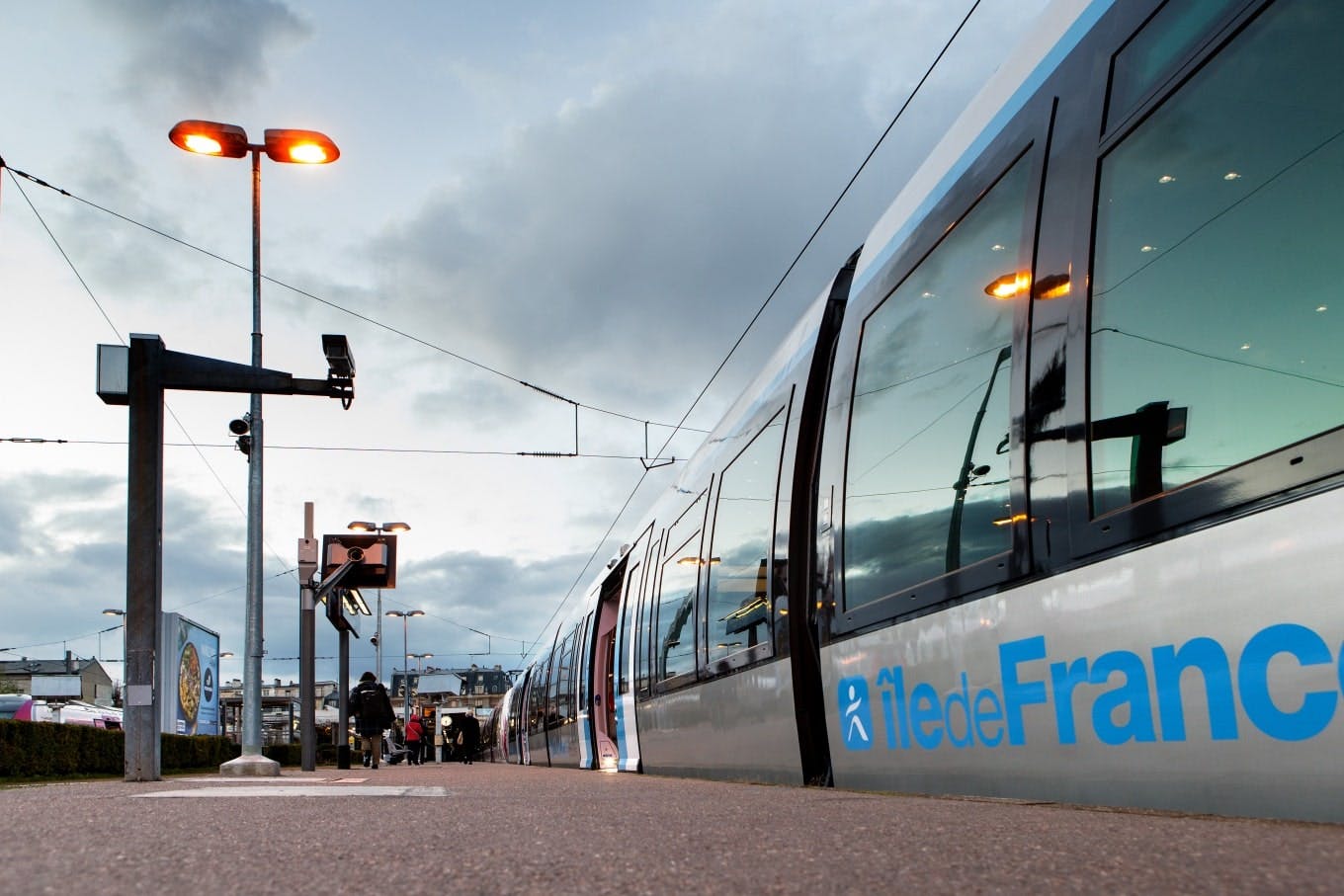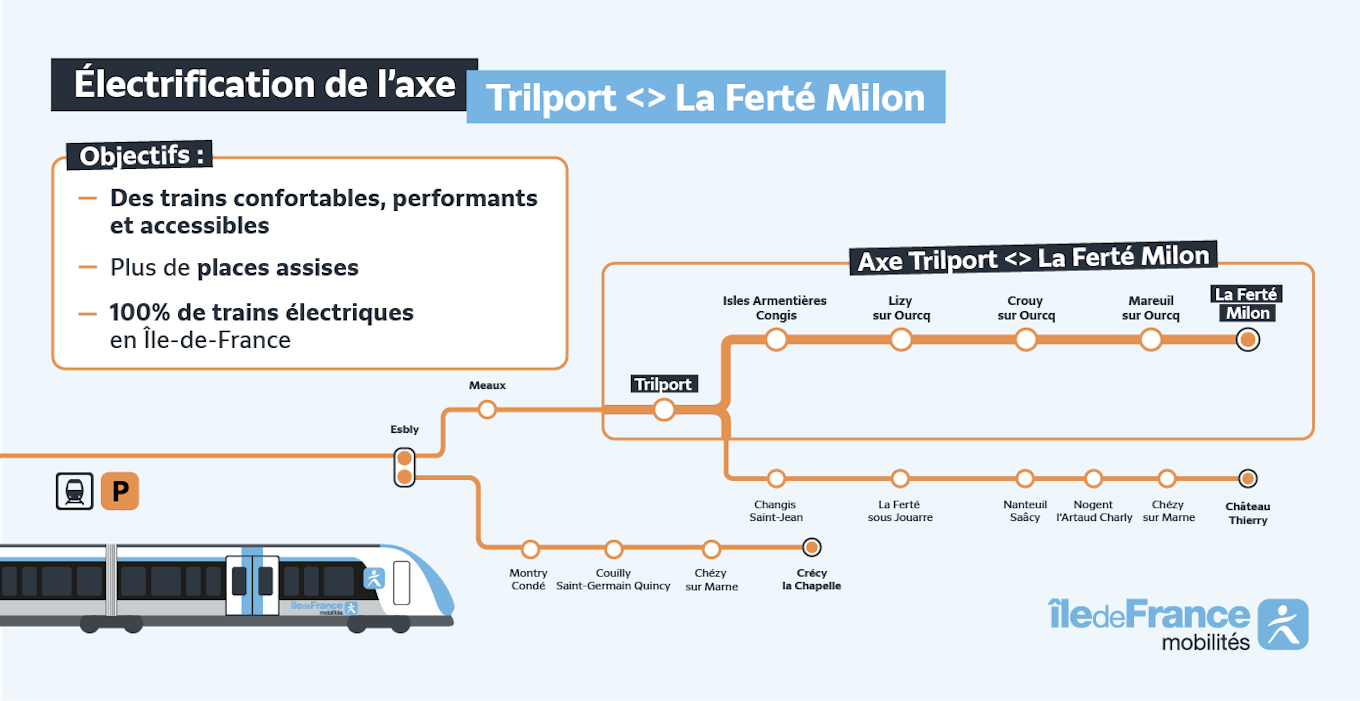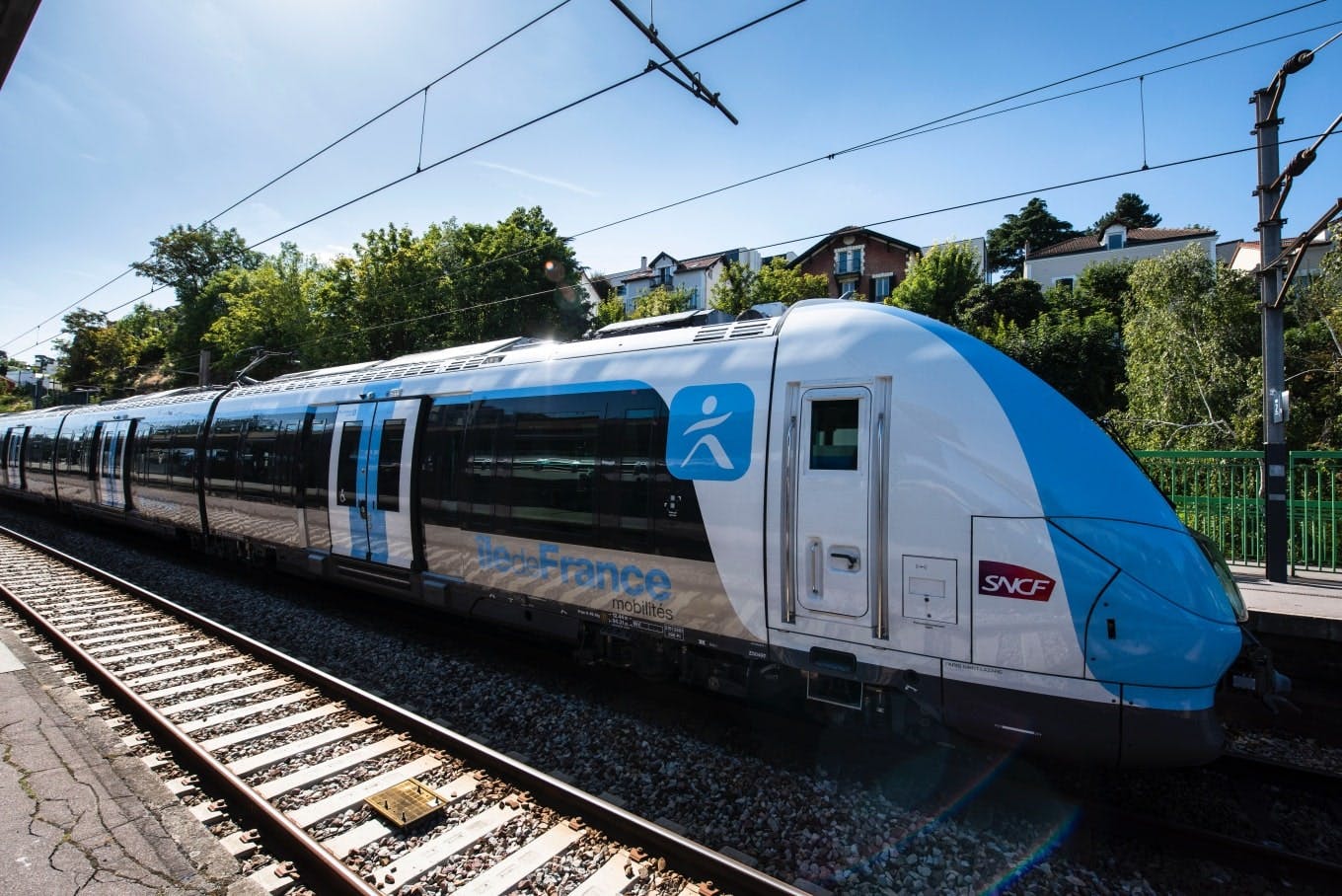Soon 100% of the Île-de-France rail network will be electrified

2030: the Ile-de-France rail network 100% electrified
It's voted, it's launched! While the electrification work on the Gretz-Provins axis (line P) will be completed by the end of 2022, all that remains is to electrify the Trilport / La Ferté-Milon axis to take advantage of a rail network in the Ile-de-France region that is finally fully electrified! A goal that will be achieved by 2030.
Ecological and economical
An electrified rail network means trains that use cleaner and more economical energy than diesel. But also more modern, more comfortable, quieter trains.
This is a central environmental asset in the vision of Île-de-France Mobilités, which is committed to investing every day to bring to life an ever more sustainable mobility in the Ile-de-France region - for its trains of course, but also through the purchase of electric buses, BioNGV or hydrogen.
2030: Trilport <> La Ferté-Milon finally electrified

Electrification of the Trilport <> La Ferté Milon axis. Objectives: accessible, comfortable, efficient trains, more seats, 100% electric trains in Île-de-France.
Why electrify the entire P line?
More comfortable and capable
When the entire P line has been electrified, all the axes will finally be able to use the "Francilien", a recent, bright, air-conditioned train, widely acclaimed by... the Ile-de-France residents!
But above all: very capable. This is an essential point as the occupancy rate of trains on line P is constantly increasing.

More robust
A single train model on the entire P line will also mean easier maintenance and therefore a more robust offer on a daily basis.
More connected
Finally, this electrification of the Meaux / La Ferté-Milon axis will put an end to the shearing in Meaux and will allow the interconnection with the future metro line 16 in Chelles.

Electrifying the Trilport / La Ferté-Milon axis: quite a project!
To electrify this very last section of the Ile-de-France railway fleet, it will be necessary to:
- Deploy more than 60 kilometres of catenaries (this is the suspended electrical cable that supplies trains via their pantograph)
- And therefore install more than 1500 supports for these catenaries
- Create electrified power stations to control the high-voltage devices located on the catenary poles
- Adapt and even lower the railway platform of certain bridges and tunnels (to allow the catenary to pass)
- Raising the platforms to 92 cm at Meaux station, to allow accessibility for people with reduced mobility
Work that will require 8 to 9 months of closure of this axis and the installation of replacement buses. A solution adopted during the consultation with the elected officials and associations concerned by this project.